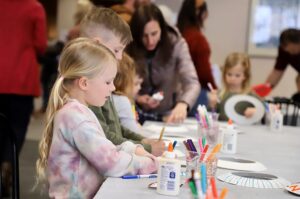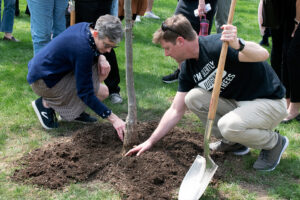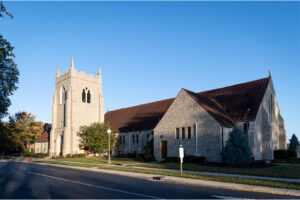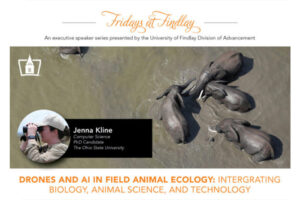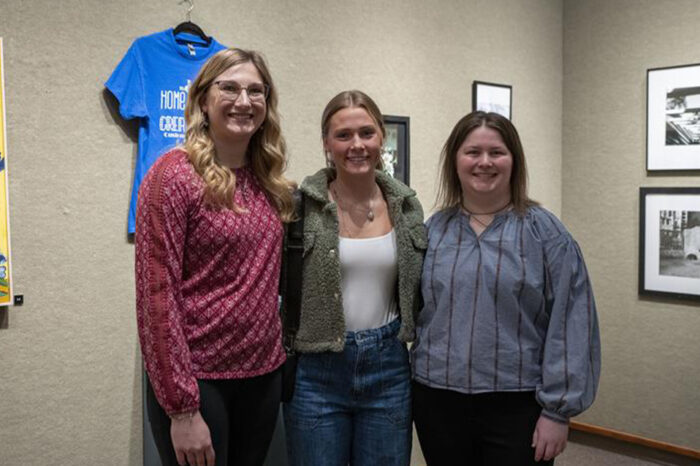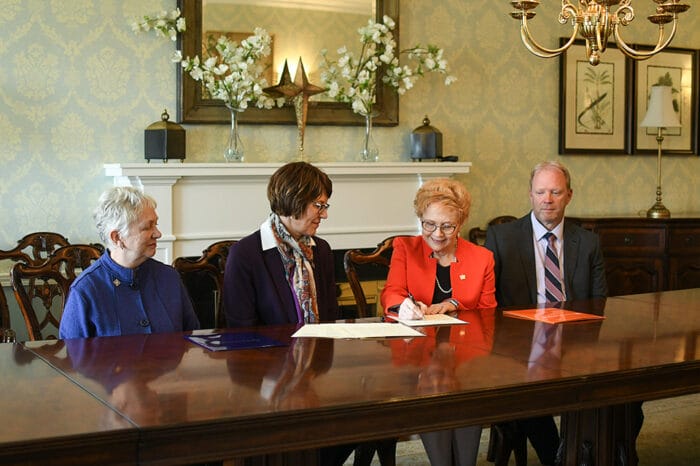Is Cuba the Phoenix Rising? ‘Activismo’ Documentary Highlights Country’s Dissident Artists

In 1998, Cuban artist Tania Bruguera stood naked, a lamb carcass hanging from her neck while she consumed soil mixed with water and salt. Called “The Burden of Guilt,” this performance piece recalled the indigenous Cubans who vowed to eat dirt and nothing else rather than be captors to the Spanish conquistadores. As a result of such provocative performances, Bruguera was awarded the artist-residence for New York, along with visiting scholar positions in major universities.
Bruguera, a Cuban installation and performance artist whose pieces often focus on issues of power and control, along with some artistic contemporaries, are featured in the documentary “Activismo: Art & Dissidence in Cuba” created by Carole Elchert, who has taught courses at the University of Findlay, and her husband, University of Bluffton Art Department chair Phil Sugden. The couple traveled to Cuba in December 2015 to interview activist-artists living in Havana. In the summer of 2016, they recorded the interviews of exiled Cubans living in New York for the film, which depicts and confirms the socio-political pressure that art can exert on suppressive regimes.
To explain why Elchert and Sugden worked for six months to visit Cuba on a scholarly research permit issued by the State Department, Elchert said: “Like many people, we wanted to go before a tsunami of social-political changes and tides of tourism completely alter the island nation, which has been suspended in time for 56 years since the 1959 revolution.”
In her PowerPoint presentation, Elchert uses one of her photographs of an imposing Havana street mural with a bird spreading its wings to point out what Cubans want most in a time of radical upheaval and change: “Cuba today is like the mythological bird of the Arabian desert that rose out of the ashes—a Phoenix rising to modernity, to freedoms, to transformative justice, while retaining the character, spirit, and beauty of their rich cultural past.”
Elchert and Sugden used their extensive travels to assist with planning and to carefully, successfully navigate a country—closed to tourists—as they filmed the artists at work in Havana. The artists have visited such countries as Tibet, India, and Nepal; were guests of the Nobel-prize winning 14th Dalai Lama of Tibet when they produced the PBS film “White Lotus” in 1991; and in 2007, received a rare marriage blessing at Tengboche Monastery near Mt. Everest, where the couple first trekked and met the respected lama of the Sherpa people of Nepal. With funds from the National Endowment and Ohio’s Joint Arts & Humanities program, they created an ambience film, “White Lotus: An Introduction to Tibetan Culture,” which prepared them for the restrictions and precarious conditions that can arise while filming in foreign countries.
Sugden clarified that filming in Cuba during an 8-day trip did not endanger the Cuban artists: “The government already knows them and their activism. Since they live in that dangerous political climate, they knew where they could meet us and what they could say or not say. Most important of all, the Cuban artists appreciate the educational purpose of the project.” The film crew in Havana included local videographer Jason Baker of Lock One Productions and Toledo Zoo videographer Alex Goetz; both “kept an eye out” and worked cautiously.
One of the educational aspects of the film is that Cuba’s Art Institutes focus on a “liberal-based curriculum that champions critical thinking skills,” according to Cuban Art scholar Rachel Weiss. As a result of the government’s emphasis on education, Cuba’s literacy rate is more than 99 percent, according to the CIA’s World Factbook, considerably higher than the United States, where about 14 percent of the US population cannot read. Although overt anti-government expression is prohibited in the artwork, Cuba’s dissident artists execute projects carefully but engage the public in their controversial performances. Some Cuban artists have chosen to remain in Cuba in defiance of the regulations, while others have relocated to the US, where they can practice activism against the Cuban government more freely, and now work on behalf of all people for justice, human rights, liberty and freedom of expression.
This documentary, like their first, was the result of encounters and chance happenings that were both serendipitous and fortuitous. For instance, “an impromptu invitation to a birthday party held in New York’s Battery Park led to meeting more of the Cuban artists, who are central to the film project,” the couple said. The project has also led them to one of the most well-known of the performance artists, now living in Yellow Springs, Ohio: Juan-Si Gonzalez.
Elchert characterized the artists featured in “Activismo” as “some of the most courageous, highly-informed artists I’ve ever met.” Along with Bruguera, the documentary highlights professor Rachel Weiss at the Chicago Art Institute; artist and photographer Geandy Pavon; Cuban art curator Elvis Fuentes; Havana-based Jose Angel Vincench and Jose Toirac; and performance activist Juan-Si Gonazalez.
“For me, you know you’re doing something with a purpose, when you’re doing something that has a life of its own.” Elchert observed. “We’re just trying to hold on to the tail of this project, which is about the importance of critical thinking, activism, and dissidence in art, in education, in societies, especially democracies, which must be guided by ‘the people’ voicing their needs and questioning those in power.”
Sugden and Elchert have begun to show the documentary trailer, which can be seen on Youtube and their Facebook site, using the title, “Activismo: Art & Dissidence in Cuba” A website in progress, www.floatingtempleproductions, shows the 1-minute teaser, images of the artists, contact information, photographs, and explanation on project donations and benefits.
The production team continues to work on the 60-minute film, supported by local as well as national patrons and donors, whose names will appear in the credits of the film. Once the documentary is completed by summer 2017, they plan to promote the documentary with PBS and such outlets as Netflix for wider distribution.
Meanwhile, Elchert’s PowerPoint presentation—which explains the project and offers background on Cuban culture, history, politics—as well as the teaser or trailer can be scheduled by groups and organizations; schools and universities; galleries and museums. By contacting local artists-educators Carole Elchert or Philip Sugden at cubanart2016@gmail.com, any individual or group may participate in the project as a donor or begin a conversation with them. They have much to say about Cuba, the function of art, as well as the educational purpose of critical thinking, activism, and dissidence.
